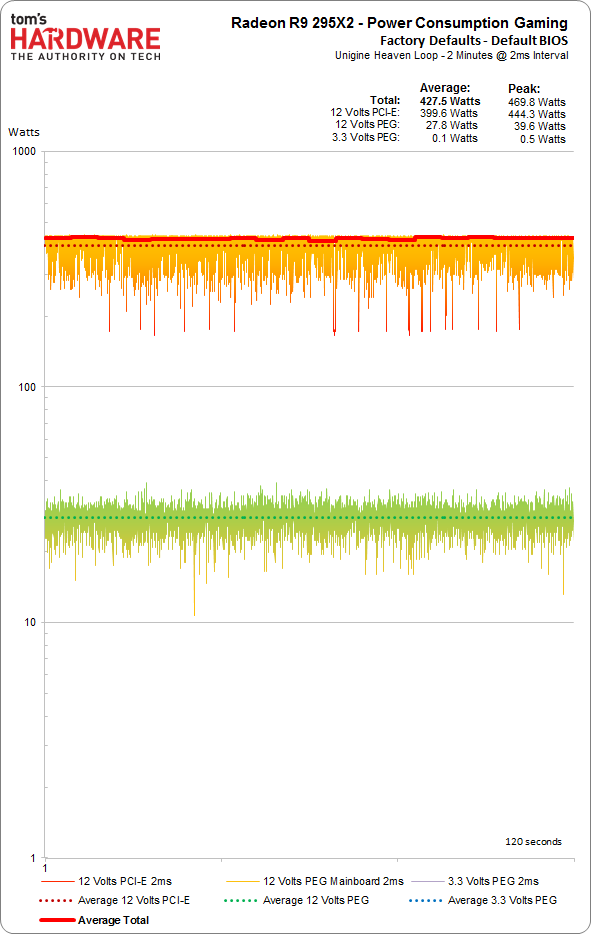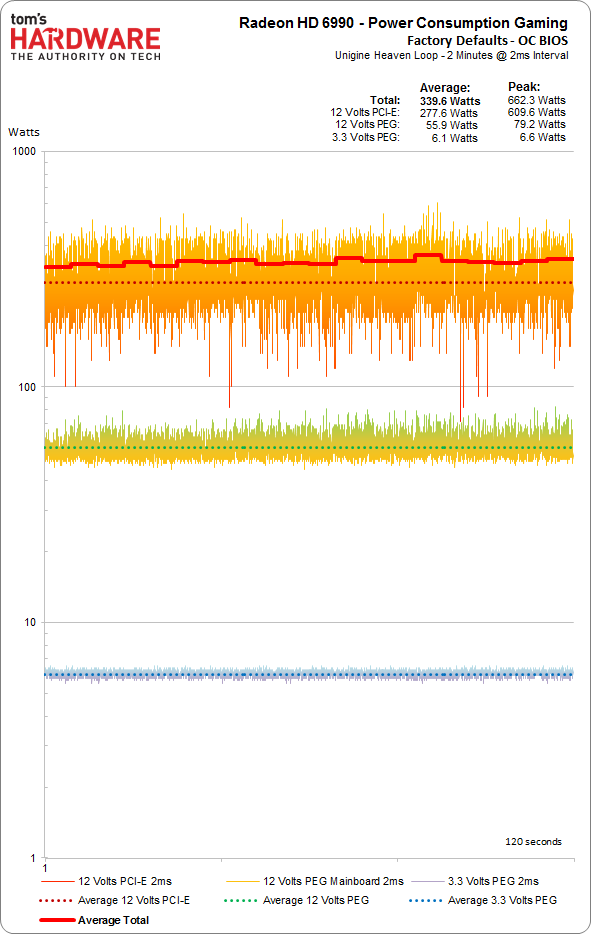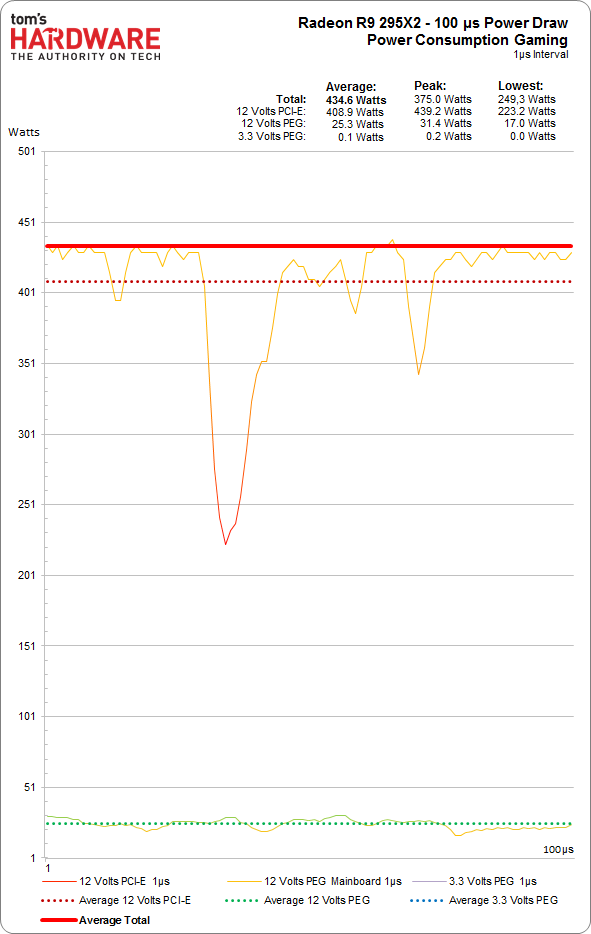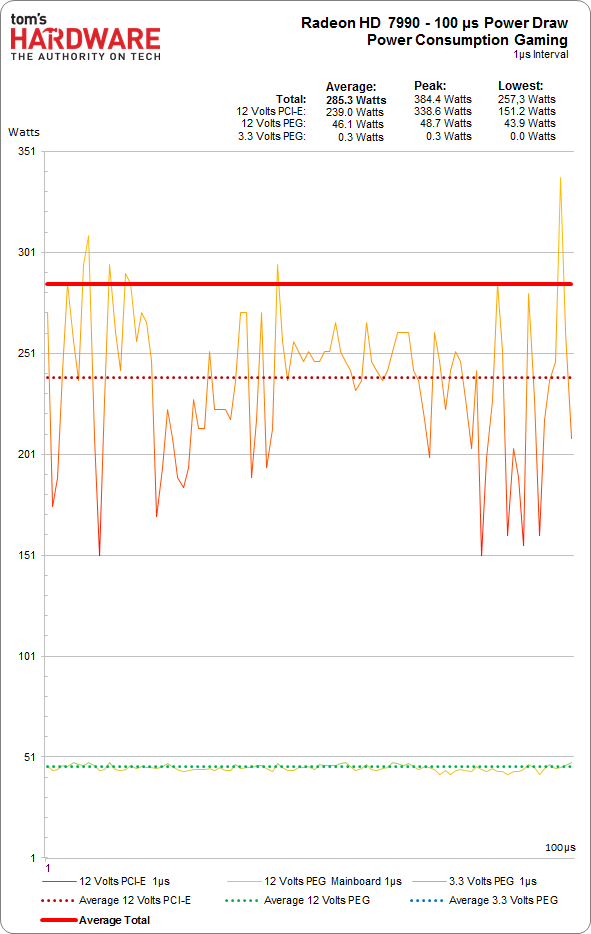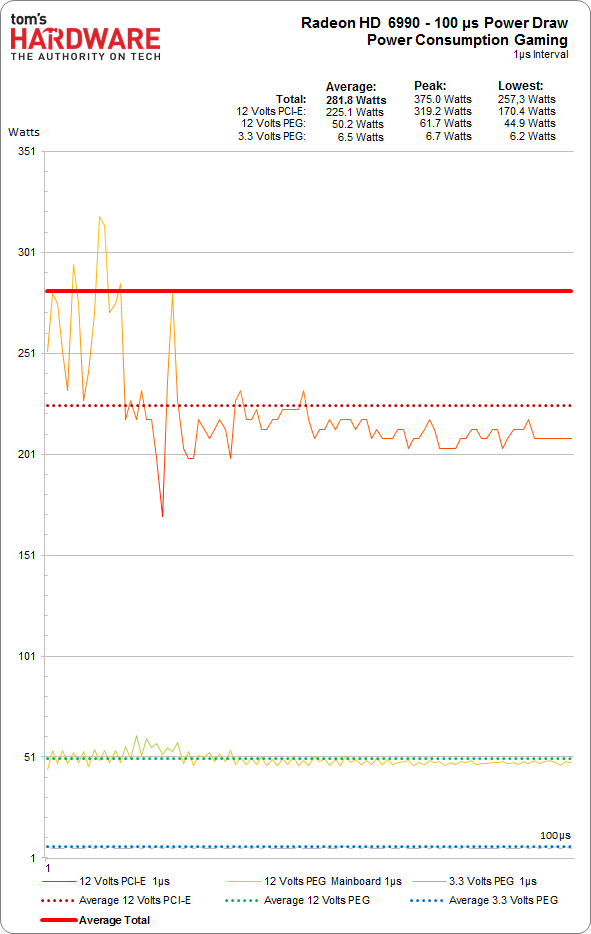Radeon R9 295X2 8 GB Review: Project Hydra Gets Liquid Cooling
“Do you have what it takes?” AMD asks, purportedly referring to the big budget and beefy power supply you need before buying its new Radeon R9 295X2. We benchmark the 500 W, dual-GPU beast against several other high-end configs before declaring a winner.
Power Consumption: Gaming
It took quite a bit of experimentation to find a realistic and repeatable gaming workload that'd allow us to generate meaningful power readings. Fortunately, we found what we were looking for while running the benchmarks for our 2014 VGA Charts: Unigine Heaven. Once we switched over to a platform that wasn't processor-limited, we started seeing consistent GPU loads in the 95% range, giving us the power levels expected from most of our benchmarked games. These tests happen at 1920x1080 in full-screen mode, using the Ultra preset, normal tessellation, and 2x AA.
AMD's Radeon R9 295X2 draws less power than two Radeon R9 290X cards together, amazingly enough. We checked with AMD, which confirmed for us that the dual-GPU board's chips are specially-binned. Presumably, that means the processors are lower-leakage parts, though it's also possible that more effective cooling helps bring down consumption compared to the hot-running reference design. After all, we've seen the 290X's power use drop 30 W just from a better heat sink and fan.
The two-generation-old Radeon HD 6990 pulls way more power from the PCI Express slot, with peak values that exceed the PCI-SIG's 75 W specification.
AMD’s Radeon HD 7990 turns out to be more frugal than two single-GPU graphics cards, drawing less power from the motherboard’s PCI Express slot compared to the Radeon HD 6990. But it also tends to throttle back after reaching a certain thermal limit.
Zooming In For More Detail
A sampling rate of 1 μs is as precise as we're able to get. It's impossible to start each card's test at exactly the same time when we're zoomed in this far. Still, the charts are pretty definitive: the Radeon HD 7990 throttles slightly after hitting its temperature ceiling, demonstrating the most inconsistent curve progression, followed by the extremely hot Radeon HD 6990. Meanwhile, the Radeon R9 295X2 runs at a comparatively low temperature, giving us the most stable chart.
Get Tom's Hardware's best news and in-depth reviews, straight to your inbox.
Current page: Power Consumption: Gaming
Prev Page Power Consumption: Idle Next Page Power Consumption: General-Purpose Computing-
Marsian Gustrianda Many people doubt about Dual GPU Hawaii will be Blow Up. It seems AMD really do well job. Nice Looking CardReply -
ohim This card is like the Veyron of WV , show the world what you can do (R295x2) but you`ll still relay on the sales of your WV Golf for revenue (270x, 280x)Reply -
outlw6669 Impressive performance, temperatures and fairly low noise!Reply
I would prefer a bit lower price, but this looks like a great card for the gamer that has everything! -
gunfighter zeck the name Dreadnaught originated from Dread Nothing or, fear nothing.Reply
Boss ship. -
Maxamus456 Hope this price stays low and not get bloated from bit con miners like its predecessors.Reply -
blubbey So let me get this straight. It runs pretty cool, quiet, performs well and (for the moment) is able to play a good selection of games at 4k admirably and is priced competitively. Plus if you are going to drop a bit more on watercooling your GPUs (which is a possibility if you're spending $1200+) that gives this card even greater value. Nice work AMD.Reply -
marciocattini Wheres Tom's Hardware seal of approval? =( clearly this card diserves some love!Reply
